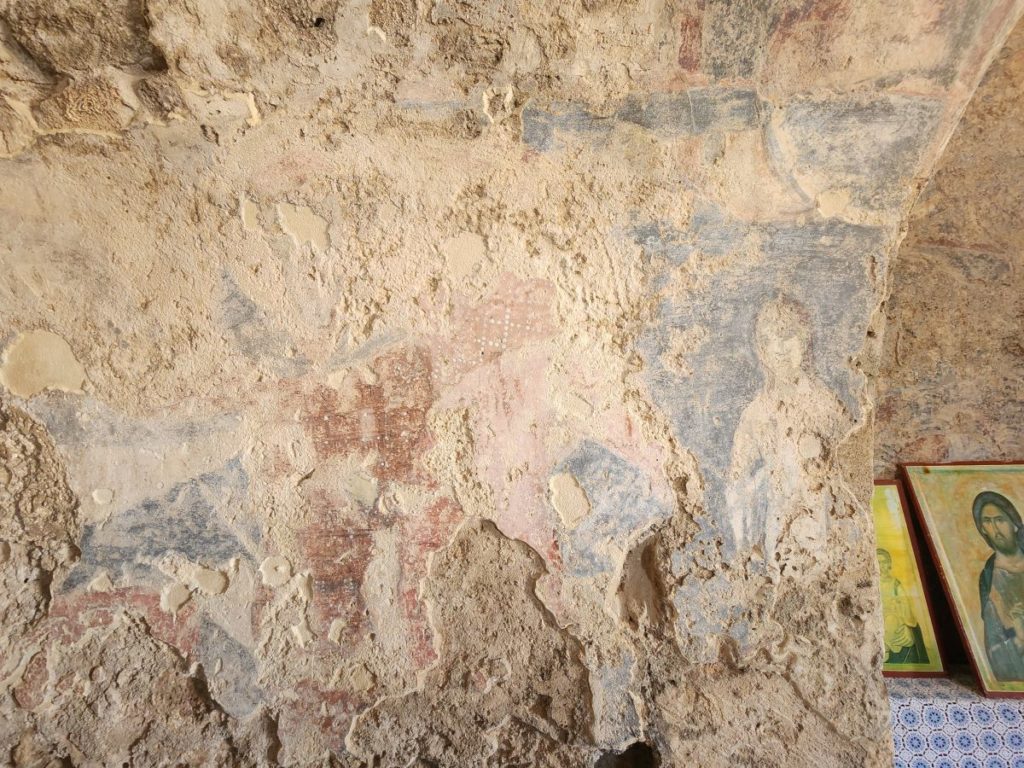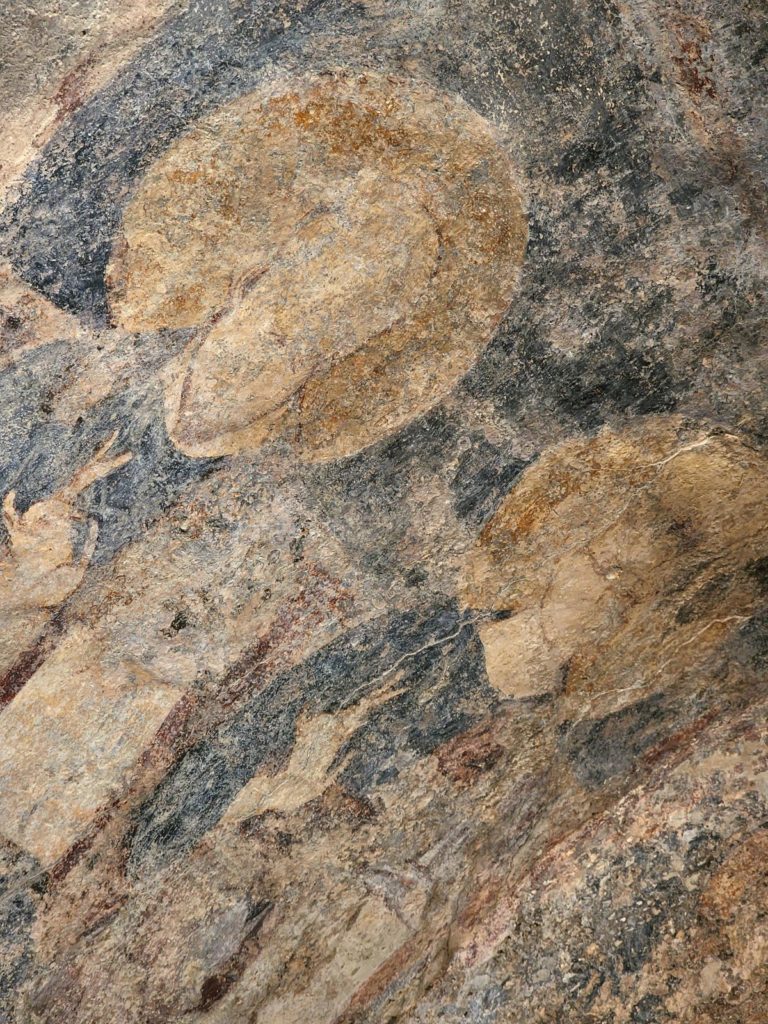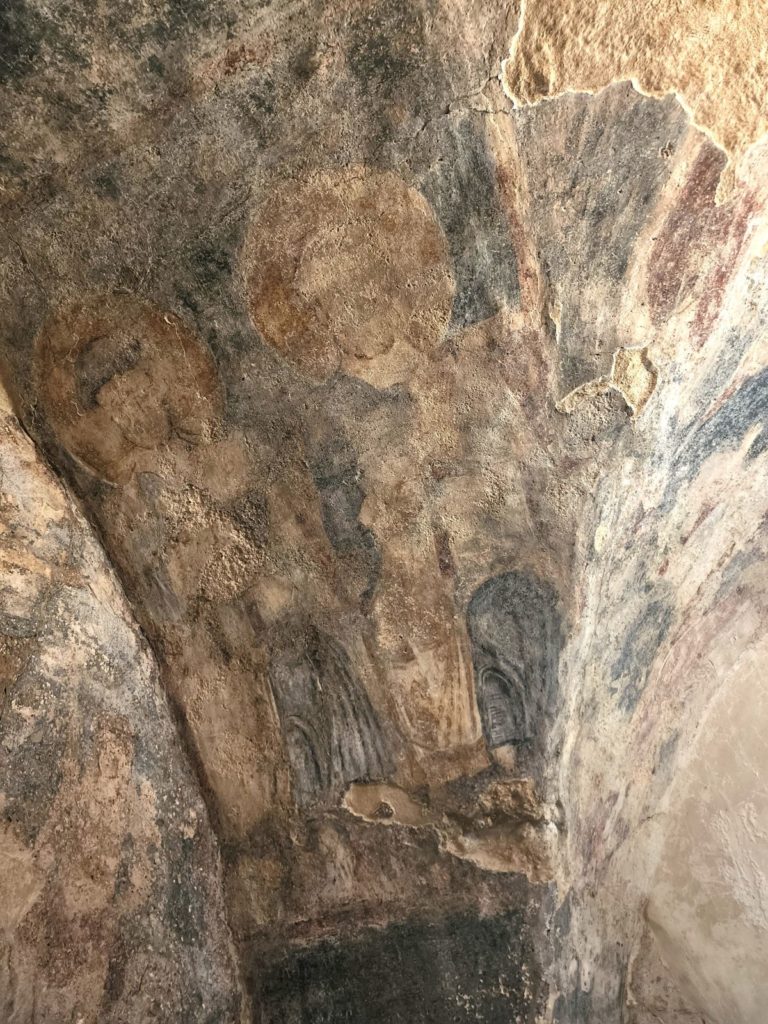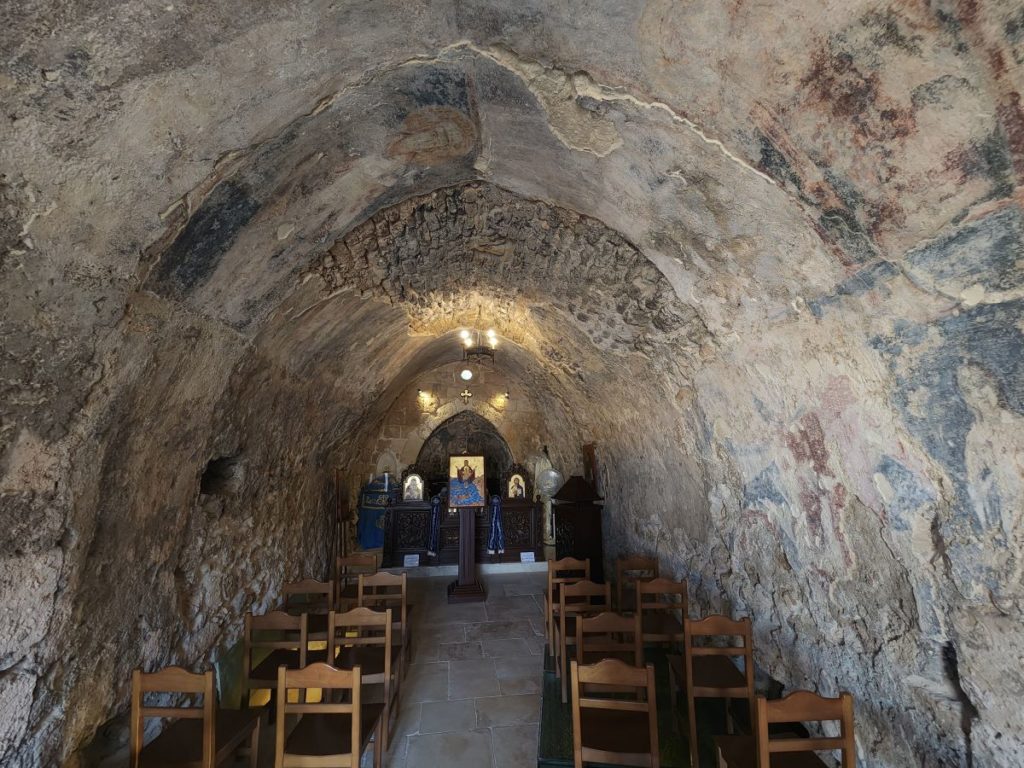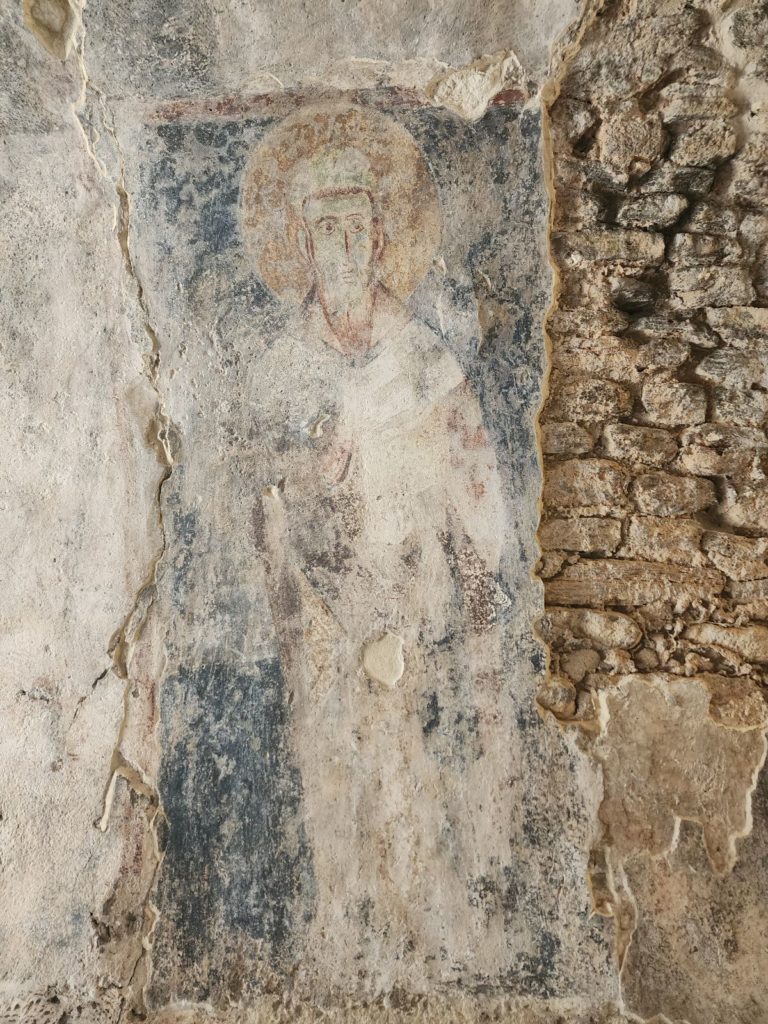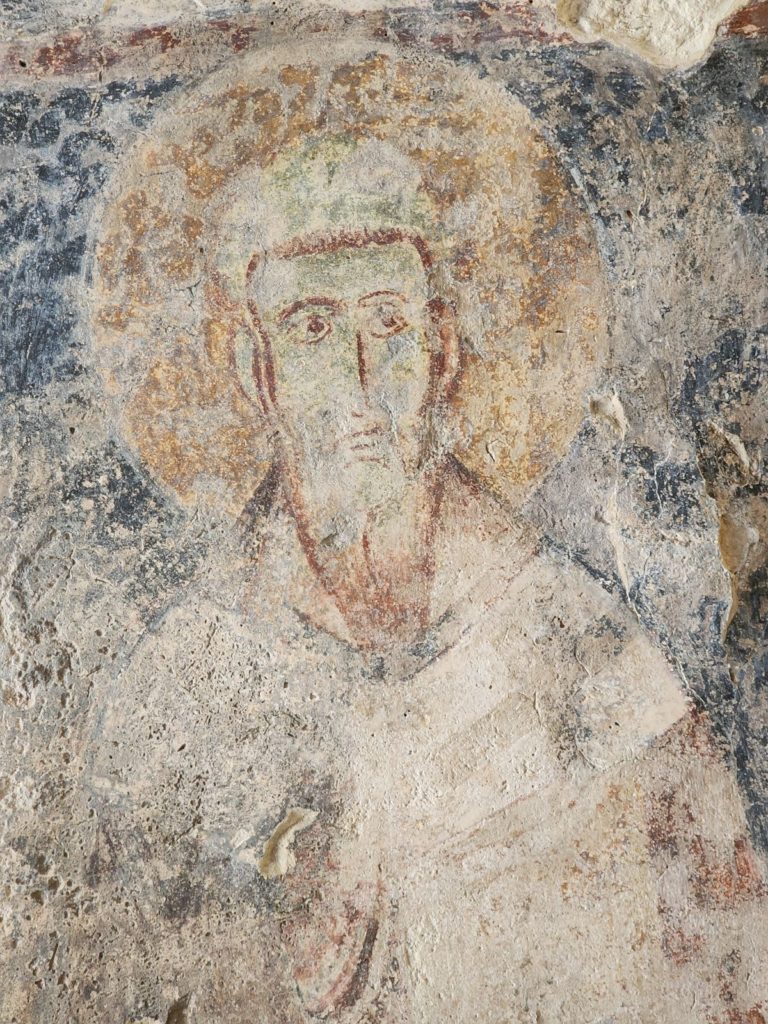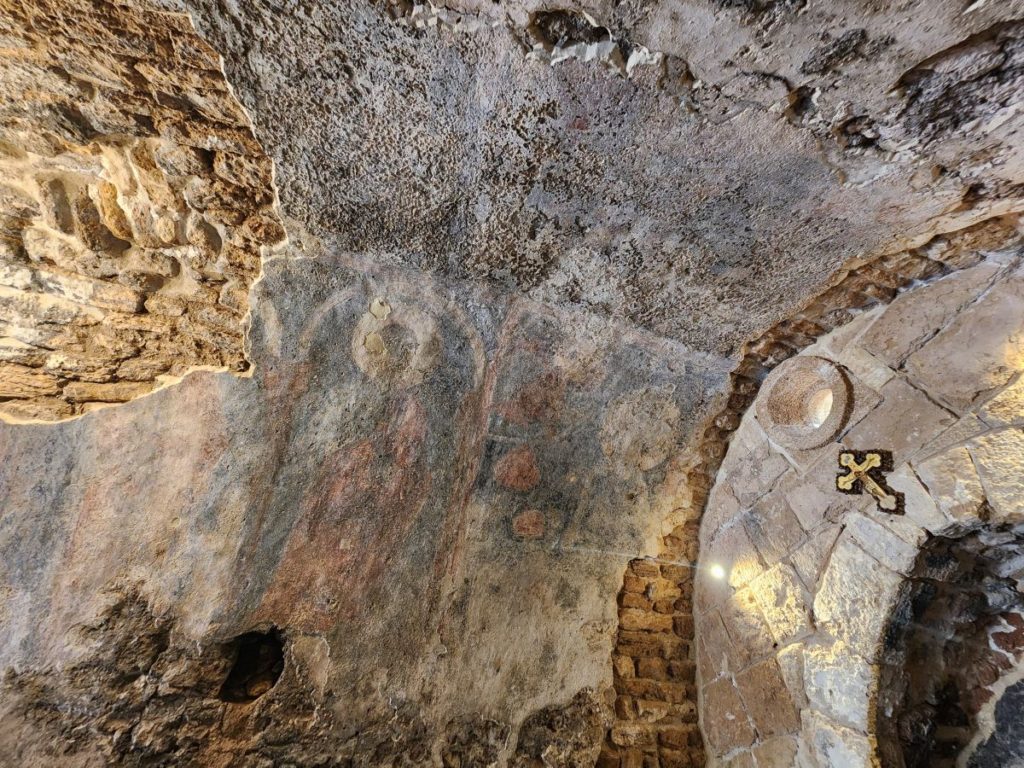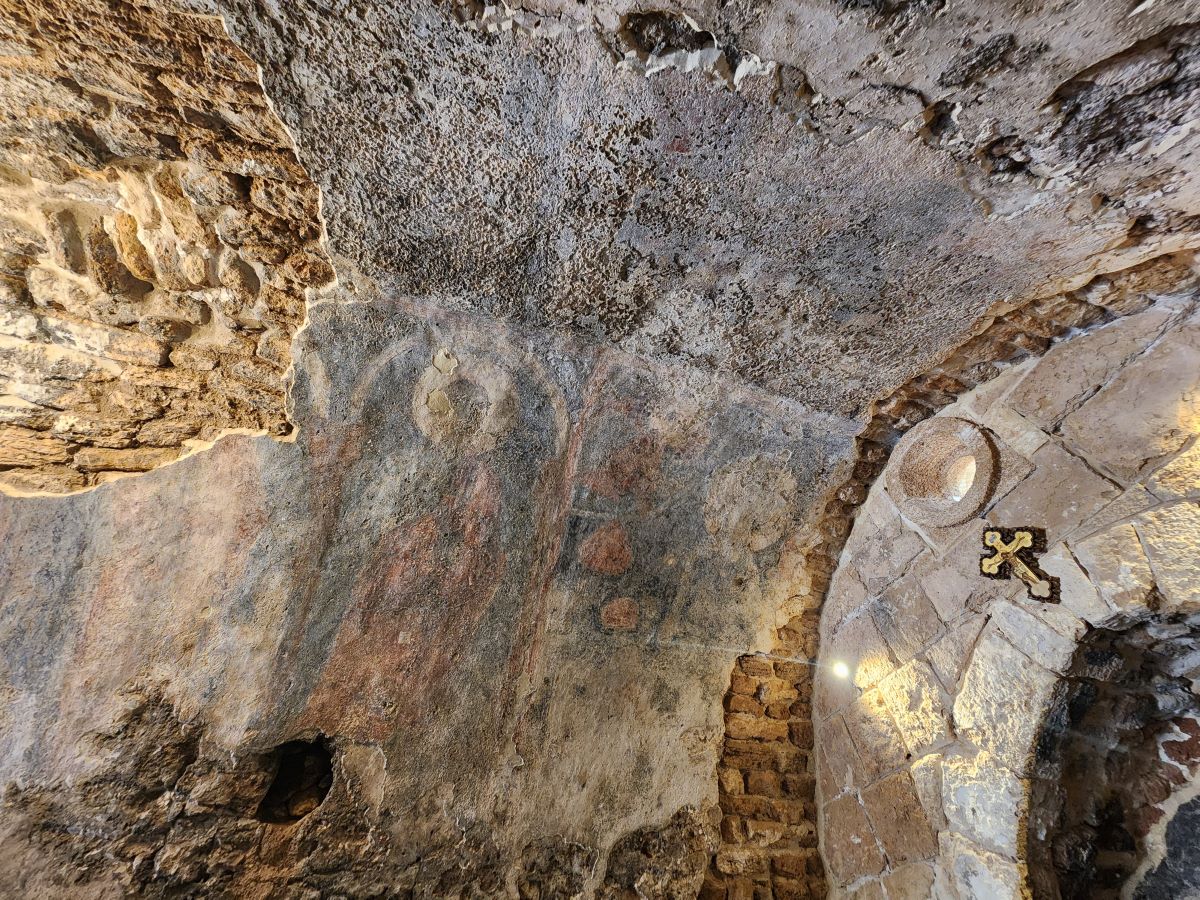The Church of Saydet el-Rih (Our Lady of the Wind) in Enfeh was constructed between the 6th and 7th centuries AD atop a network of cisterns dating back to the Iron Age. It is notable as being one of the few churches with a vault decorated with medieval paintings in Lebanon.
The church features a single nave oriented to the east and has two doors. Its main attraction is its Crusader-era frescoes, a period during which Enfeh (designated as Nephin by the Crusaders) was a vassal lordship of Tripoli. The church fell into disrepair following the Mamluk conquest in the 13th century, with soot marks, accumulated liturgical materials, architectural elements, and medieval ceramics bearing witness to its destruction.
Frescoes
The apse: it appears to depict Theophany-Deësis: Christ with interceding saints, typically the Virgin Mary and John the Baptist. This common Levantine theme is present in almost all medieval church apses in modern Lebanon, with few exceptions.
The north and south nave walls: these sections have lost most of their decorations, with only a few small plaster fragments revealing images of holy soldiers. A holy horseman is depicted on the western end of the south wall’s outer plaster layer.
The eastern end of the north side of the barrel vault: this section features the remnants of a figure in a blue tunic and green cloak are visible, leaning eastward with an outstretched right arm and looks left at a red-clad angel in the upper left corner. Below the angel, two red flames over a mountain pattern likely depict the sacrifice of Isaac by Abraham, with the angel intervening to stop it. The composition adjacent to the scene of Isaac’s sacrifice on the north side of the barrel vault appears to show an alignment of saints standing in an arcade supported by columns with capitals.
The last two figures, closing out the paintings on both sides of the western ends of the barrel vault, open the scene of the Judgment that unfolds in the entrance porch. Two standing angels are rolling, each on their own side, the firmament of heaven.
The western end of the south wall of the nave: this section features a large painted panel, depicting a holy rider on a red horse, holding a lance in his right hand and a shield in his left. This image, featuring a female figure, has been identified as a Western representation of Saint George delivering the princess, a theme uncommon in Eastern iconography. However, while Saint George is typically shown on a white horse, the red horse in Enfeh’s depiction is more commonly associated with Saint Theodore, another well-known holy soldier.
Karim Sokhn
Tour Operator & Tour Guide
References:
The Newly Discovered Wall Paintings in Saydet el-Rih in Enfeh (Lebanon) through Graphic Survey, Rafca Youssef Nasr
